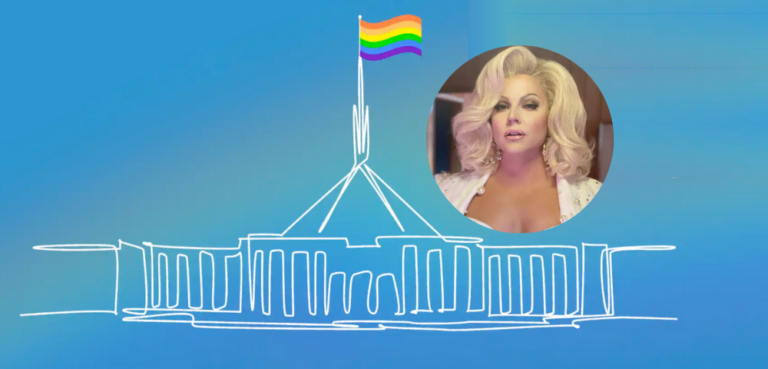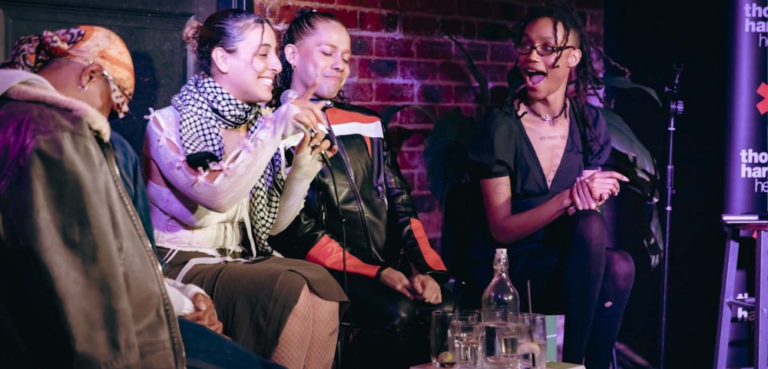
World AIDS Day 2020

On December 1 each year since 1988, the world pauses to remember those that we have lost to AIDS related illness, and to unite in the fight against HIV. Globally, there are an estimated 38 million people living with HIV, and since 1984 more than 35 million people have died of HIV or AIDS.
While for some in Australia, the situation has improved remarkably over recent years, reflecting on this year’s global theme for World Aids Day ‘Global Solidarity Shared Responsibility‘, Deputy CEO of Positive Life NSW, Neil Fraser, reminds us that for other communities around the world, the situation is far from perfect.
“If you are living with HIV in Australia you are certainly one of the lucky ones, we have access to the best treatments. Given what’s happening with COVID-19, I think it reminds us that when we get access to treatments and vaccines, it doesn’t mean the rest of the world will get access to them, we are coming from a place of privilege.”
This point was further driven home when this morning Health Minister, Greg Hunt, announced that the Australian government would ensure that “every person living in Australia with HIV has access to life saving anti-retroviral medicine, regardless of Medicare eligibility.”
Yet, access to proper health care is only the tip of the iceberg, with many of those living with HIV all too aware of the constant stigma or fear associated with the virus, as Fraser explained.
“One of the first challenges is that we can measure it, but we can’t prove its existence. That has been an ongoing challenge for the last 30 years. We have access to tools now that measure stigma in particular settings, such as within health care or the community more broadly. We need to advocate for our governments to include measures around stigma in HIV strategies.
“Stigma still exists, it can be in the community or can also be self-stigma as well. When someone first receives a diagnosis, one of the first things you do is start to imagine how other people will respond to you telling them. We also have the left over from what was quite a traumatic campaign for people living with HIV, the Grim Reaper campaign, it left quite a distasteful taste in many people’s mouths.”
A present example of the kind of stigma that the HIV Positive community still face can be found in the New South Wales Mandatory Disease Testing Bill which seeks to enforce compulsory testing of persons whose bodily fluids have come into contact with frontline health, emergency or public sector workers.
“This again is just the fear of HIV being played in a political setting,” Fraser told us. “It’s pretty disappointing that a bill like that would be introduced into parliament during NAIDOC Week and in the lead up to World Aids Day.
“This is the effect of stigma. The fear of HIV is used to position people living with HIV as a vector for disease when the actual truth is people living with HIV have been at the forefront of the HIV response, have been actively involved and today 98% of people living with HIV are on treatment and have an undetectable viral load. Yet, stigma still positions us as the other.
“Criminalisation of HIV transmission also remains one of the largest issues for people living with HIV, it continues to prevent people engaging in testing regularly. If we look at mandatory testing laws, those laws are more than likely to disproportionately effect Aboriginal and Torres Strait communities as a way of police being able to detain someone and they then fall into that cycle of recidivism.
“Stigma effects everyone differently, where we have pushed the NSW government with the next HIV strategy is to not just have a HIV prevention strategy, but one which also looks at the quality of life of people living with HIV.”
One person who knows all too well the effects of HIV stigma is Living Positive Victoria President Christabel Millar, who in 2010 was diagnosed with HIV. Reflecting on her journey over the last 10 years, she told Star Observer that, “Stigma is so insidious, there is the big stigma with the capital S, like the fear of losing or not being able to get a job, but then there is lower case stigma. I had a doctor once who found out I had a partner and was like ‘oh my god that person must be an incredible person’ but I didn’t say anything. In the medical profession, these people in reality should be your safest place, but a lot of women I have spoken to have said that this is actually the most dangerous space in terms of your wellbeing.
“I often feel very lucky. But when I play back in my mind what occurred, it has taken me a decade to come to terms with what I like to think of as ‘phase one of learning to living with HIV.’
“I’m the classic Australian cis-gendered female case. I came into contact with HIV in Melbourne, I was 22 and I continually presented to a GP with AIDS defining symptoms and was consistently turned away. They missed completely the very real symptoms I was presenting with.”
Millar recalled, “I was 45kg, and everything was shutting down. I felt I would die in my sleep each night. I could feel that sense of passing away, I had to ask for a HIV test. I really hope everyone who is not positive understands how dangerous it is to refuse a test to someone who is considered to be in a low risk category.
“My doctor cried when they told me. I spiralled for four years, never telling anyone except for a couple of friends back home in London, the isolation was debilitating. I am only just recovering from that free fall, but despite this I am lucky, my struggle pales in comparison to others.
Pausing for a brief moment, Millar reflected on those that have come before, particularly the women that were diagnosed and lived with the virus in those early days of the AIDS epidemic. Pioneers of the ongoing fight that sadly so often get overlooked.
“When you are diagnosed younger you are still trying to keep your head above water and make it stay there. But I think of the women like Bev Greet who was diagnosed in the early 80s and was one of the few or only women present at People Living With HIV meetings.
“I learnt recently she stormed the stage along with another positive women Diane Lloyd at a national convention, saying ‘don’t talk about us, talk to us.’ Greet also went on to form Positive Women Victoria, which is the only women’s focused HIV service in Australia, even 30 years later. Can we all imagine the courage and persistence this took?”
This year, the Australian theme for World Aids Day is ‘Now More Than Ever’ and is one that Millar explained is particularly pertinent in light of 2020.
“For me this theme describes the consistent need to renew and recapture focus on this day each year. We need to close in on access to health care and improved wellbeing outcomes. But because a sense of freedom has been achieved for some of the more fortunate members of our community, I think this can signal to our supporters that they can take their foot off the pedal.
“But this could not be further from the truth, particularly in light of 2020 when we have all been reminded of how quickly we can lose our rights once we are perceived to be infected with a virus. The theme for this year Now More Than Ever is about how, now more than ever we have to double down on the knowledge we have as a community, we are not living through our first pandemic.”
One of the other key areas where work is still needed to be done, and another area too often overlooked, is that rates of HIV infection in Aboriginal and Torres Strait Islander people are now more than double the rates in any other Australian population group.
“This is despite being such a small part of the population and even though it’s their own land,” explained Millar. “Our colonial care models do not fit their needs and we have a real absence of community care being viewed as vital. Our paternalism in that sector of the HIV community is still so rife.
“These areas are so often overlooked, and I feel like I need to say sorry for all the areas that I have missed, because everyone is worthy of our time and support.”
Our conversation here moved to the current global pandemic, one which has ripped through communities across the world and through our own communities here in Australia.
“This is so complex and wonderful and awful, in that it is extraordinary to hear the secret words and language of our community just slip out of the news broadcaster or your colleagues, talking about viral load and getting tested and infection.
“Though for some people this would have been shattering, for others it would have been a relief to have those words out in the public and part of the norm. I think HIV positive people, our community are probably desperate to get out there and share their knowledge and tools that they have had to use. Whether there is a true appetite for that is really hard to see, yet again the world is cutting its nose off to spite its face.”
Concluding, Millar said, “It’s almost rude to be hopeful when we look at the world right now, however you must not lose hope, you must keep fighting with every bit of light left in you.”
To commemorate World Aids Day, there are a number of events being held online and in person in capital cities and towns across Australia, you can find a full list of them here.









